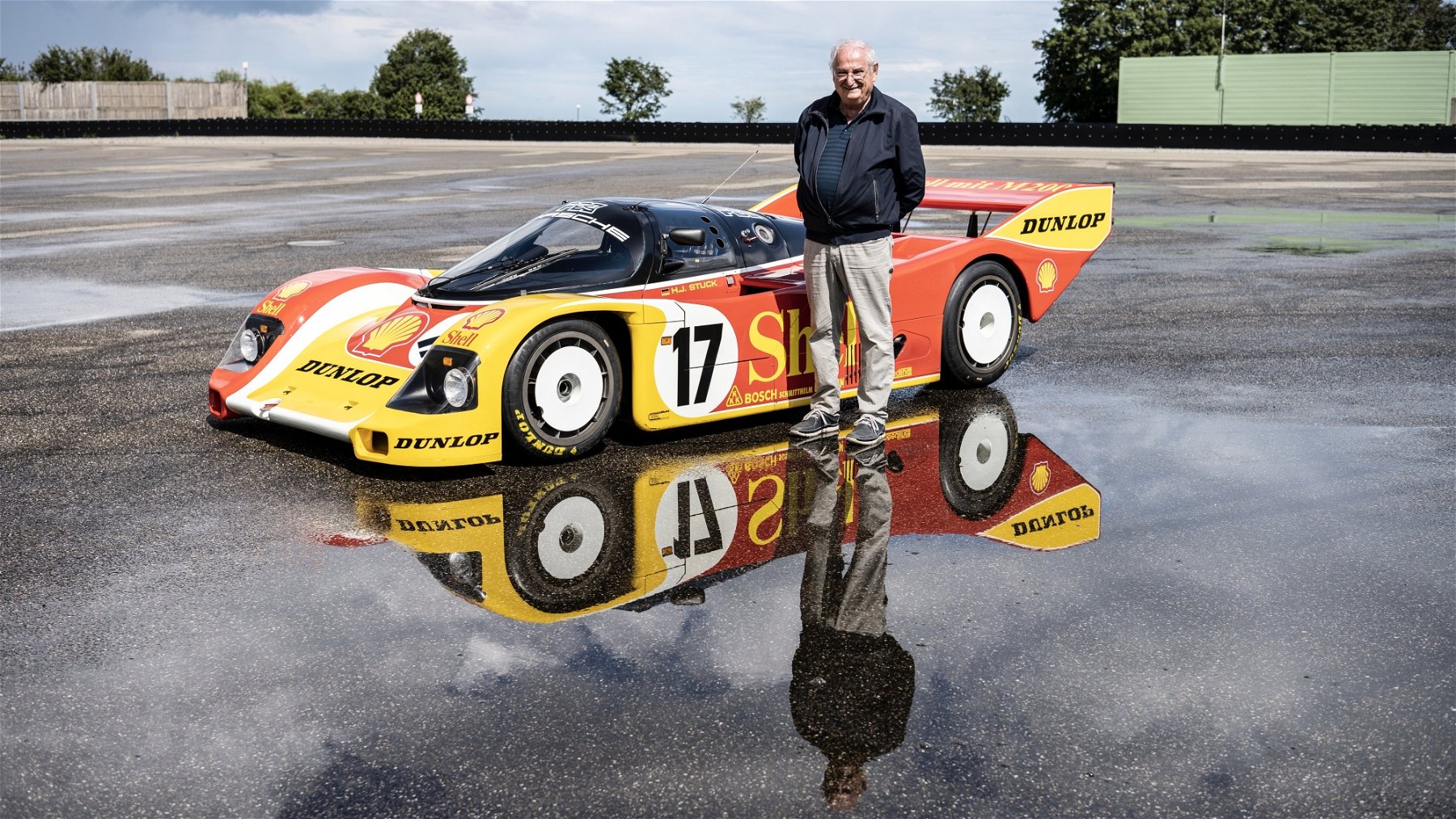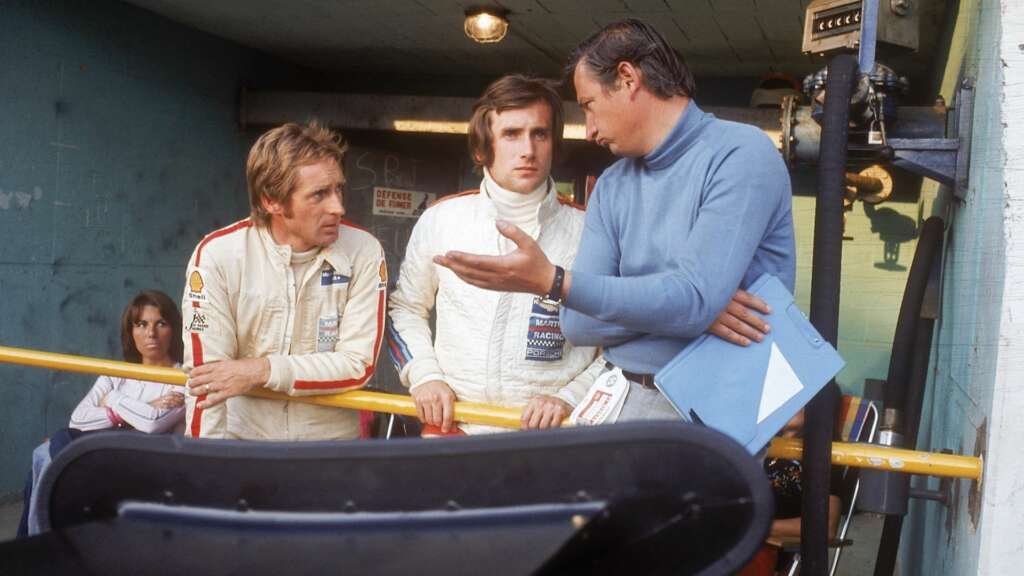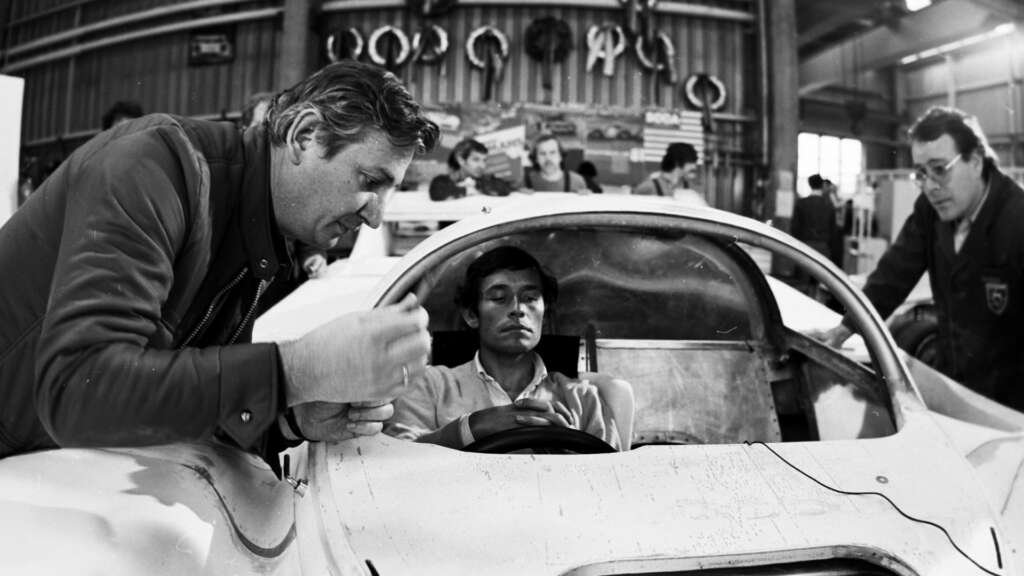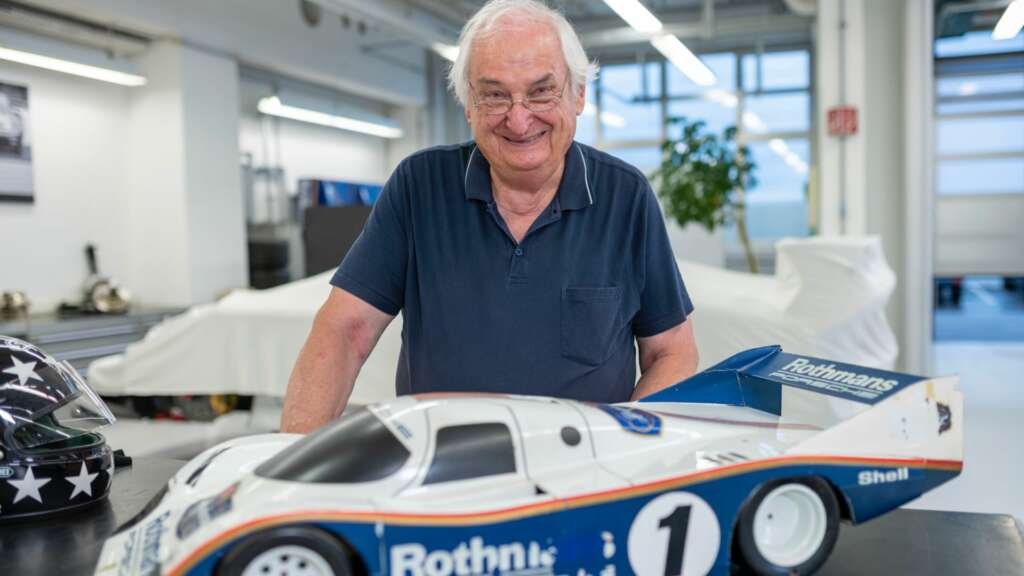
Probably anyone who is a little more intensively involved with Porsche sportscars, will have heard his name: Norbert Singer. He saw himself quite modestly as a racing engineer with a passion for working on cars. Yet, together with Hans Mezger, he was one of the main protagonists during Porsche’s most successful racing era. With Wilfried Müller, Norbert Singer tells the most exciting stories from his three and a half decades of motorsport in the service of Porsche in My Racing Life with Porsche 1970 – 2004.
The book comes simply and without much tinsel as a dark blue hardcover with dust jacket. When you think of Singer, Sport Fahrer Verlag has chosen the right layout here. Straightforward, authoritative, without taking itself too seriously. In the 16 chapters, the reader travels with Norbert Singer through his entire Porsche racing career, starting with his career decision in favor of the automobile and against space travel.
Two of Singer’s long-time companions – Jacky Ickx and Jochen Mass – did not miss the opportunity to write a greeting for the introduction. They accompanied Norbert Singer’s endurance racing career and experienced countless successes together. Through their dedication, they played a significant role in Porsche’s records at Le Mans, Daytona and other endurance races.
This is a chronological review of Norbert Singer’s work at Porsche. It is therefore clear, that Singer describes the design details of the vehicles in his inimitable style. One literally listens to the aerospace and automotive engineer while reading. Of course, a basic knowledge of technology (and aerodynamics in particular) helps, since Singer doesn’t describe things in great detail, but in as much detail as necessary. The pleasantly entertaining sections cover the most important parts of Singer’s racing career.

Great photos, some from Singer’s private archive, run like a thread through the 360-page book. The illustrations show a lot of work in the wind tunnel at Stuttgart University – otherwise reserved for a select few. But there are also many shots from the tests at Paul Ricard, on the Weissach skidpad and the racing events. The pictures, some of which are printed on full or even double pages, lighten up the book and make Norbert Singer’s reports more comprehensible.
The most exciting thing about biographies are usually the little stories on the side, rather than the big headlines, you know anyway. This is exactly the case in the Porsche Museum edition of Norbert Singer’s and Wilfried Müller’s My Racing Life with Porsche 1970-2004, starting with the delightfully stereotypical story about Ferrari’s refueling system at the Nürburgring in 1971. Singer was proud of a rapid refueling system developed in-house at Porsche, but the team from Maranello cultivated a somewhat more pragmatic approach…
Time and again in this summary of his work, Norbert Singer reports on the collaboration between drivers and engineers. Not least about the collaboration with the self-proclaimed best test driver Porsche had – Singer’s boss at the time, Dr. Ernst Fuhrmann. Without wanting to spoiler too much here: This anecdote really made me laugh out loud while reading it. Singer’s descriptions of the oil thermometer in Fuhrmann’s Porsche 911 are worth the book alone.
Of course, there are familiar stories in the book, such as the story about the legendary pit board with “Singer says slow”, or the creation of the “Singer dent”. But Norbert Singer’s memoirs regularly contain little morsels of Porsche trivia that might surprise even true connoisseurs of the subject. Whether it’s the homologation negotiations with the sporting government, the rear window over the windshield because, according to the regulations, the original windshield only had to be visible, or how to avoid disqualification at the 24 Hours of Daytona with lipstick. Even if in the end a certain Dr. Dave Helmick with John Graves & Hurley Haywood won the race.

Norbert Singer also goes into particular detail about the development of technology in racing. This gives a first-hand insight into the technological quantum leaps of the early 80s. It is impressive how many innovations the engineers of this era brought to racing. The now ubiquitous Porsche dual-clutch transmission, for example, was used under racing conditions as early as 1984 in the 962.
Norbert Singer has achieved everything with Porsche. Under his guidance, the motorsport team took 16 overall victories in the 24 Hours of Le Mans alone. He was also responsible for the aerodynamics of the Porsche 956, which dominated endurance racing like no other car since. People even like to call him Mr. Le Mans. Nevertheless, Norbert Singer’s descriptions and his self-reflection are characterized by great modesty. So it’s no surprise that Singer also sketches failed developments and racing missions directly and to the point.

This honesty, sincerity and modesty seems to have united the great Porsche employees of the time. Because the same is also said about Hans Mezger, Herbert Linge or Valentin Schäffer. That’s why one feels for Singer, especially in the descriptions of the Porsche 2708 Indycar project. When talking about it, Singer reports on the political currents that ultimately caused the project to fail.
In Norbert Singer – My Racing Life with Porsche 1970-2004 the incredibly trusting management culture at Porsche also becomes very clear (“Singer should come up with something!”). In most cases, the projects were also crowned with great success. Even if not everything worked out at the first attempt, Singer’s hit rate as a race engineer was incredibly high. It should not be forgotten, however, that road cars also bear his signature. Thus was born the Porsche Carrera GT ultimately from the remains of the unfortunately halted LMP 2000 project 9R3.
Another point that becomes very clear in the book is Singer’s attitude towards motorsport. As he states very clearly, in his view, current motorsport has the overriding problem of hardly being affordable for private teams anymore. Hence, it is certainly thanks to Singer, that Porsche to this day still pays a great deal of attention to customer motorsports that can be financed. And it’s hard to imagine today, that Singer’s team also studied proposals for improving racetrack safety or the aerodynamics of maglev trains virtually as a sideline.
Anyone interested in Porsche’s racing history should have read this book. Period. It clearly conveys what it meant to devote one’s life to motorsport 50 years ago. Even the hardships of that time are not glossed over, but – typical Porsche, typical Singer – are dealt with in a factual and efficient manner. To sum it up, it was a fantastic time travel through Porsche’s Le Mans history in particular.
The fact that the book, with its simple design, is less suitable as a decorative element on the coffee table and more suitable as a reference work for racing development is also a perfect fit for Norbert Singer. His aim has always been to work efficiently and achieve measurable results. His race cars’ wonderful elegance and sheer beauty was more of a by-product, so to speak. Together with Wilfried Müller, Norbert Singer has succeeded in creating an absolute must-have for every Porsche racing fan’s library with this work, which is available in German and English.

© Bilder: Porsche AG
Elferspot magazine